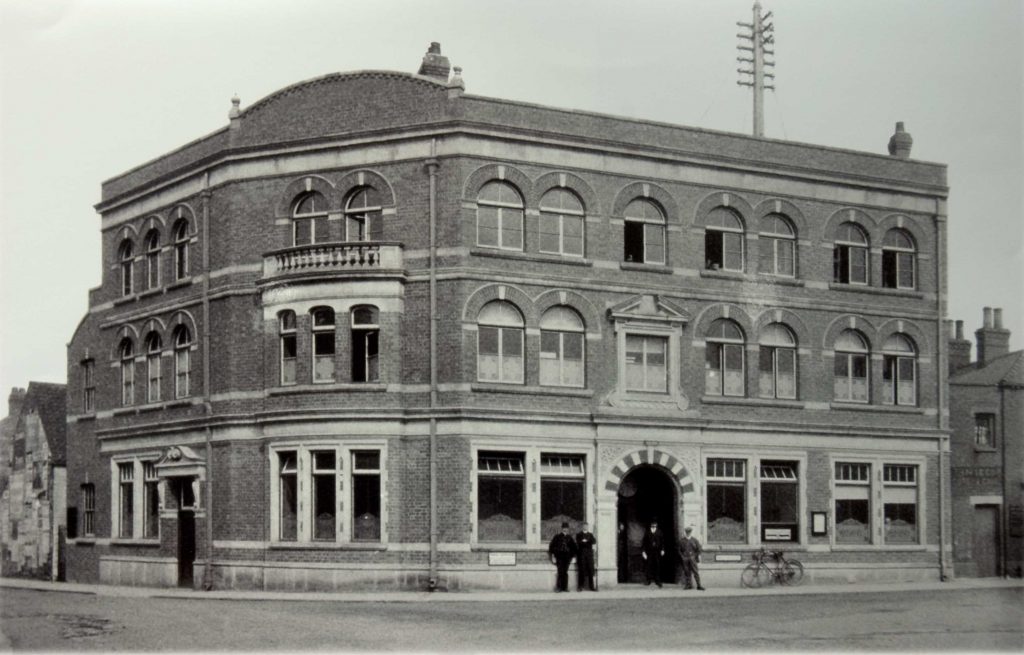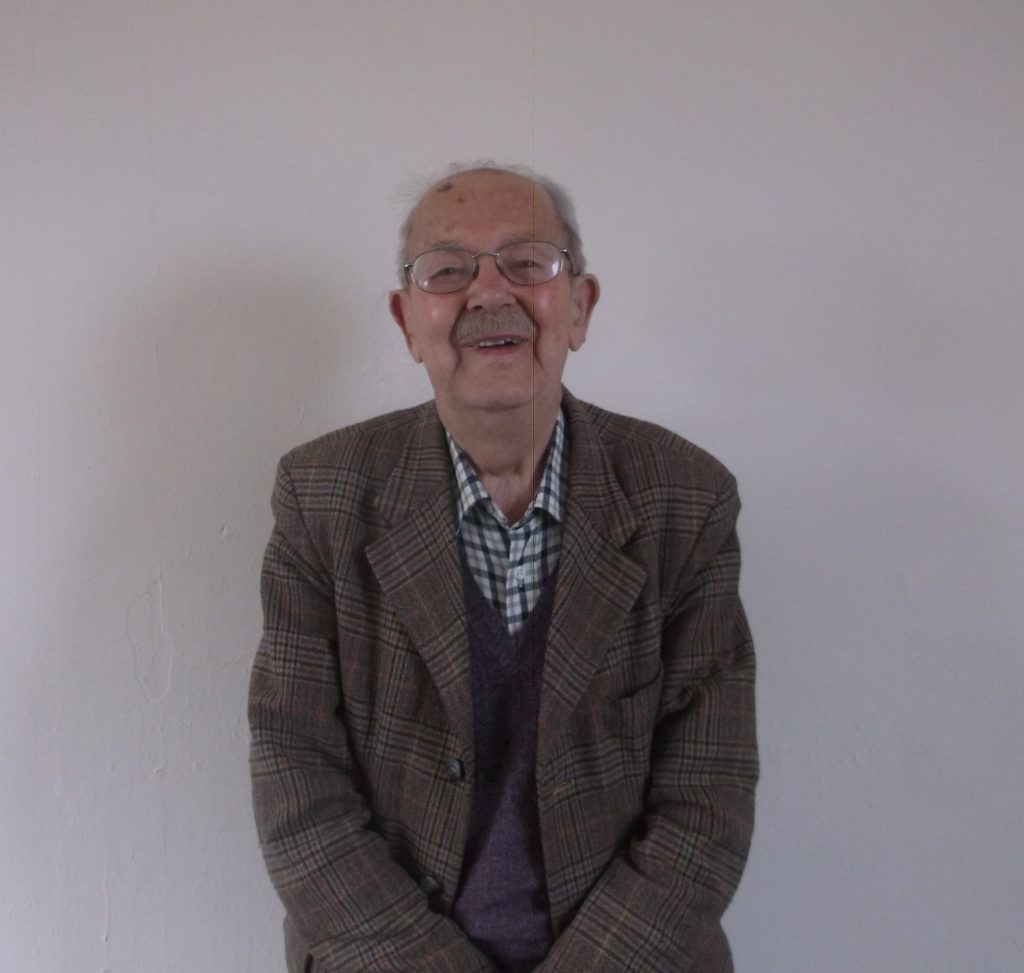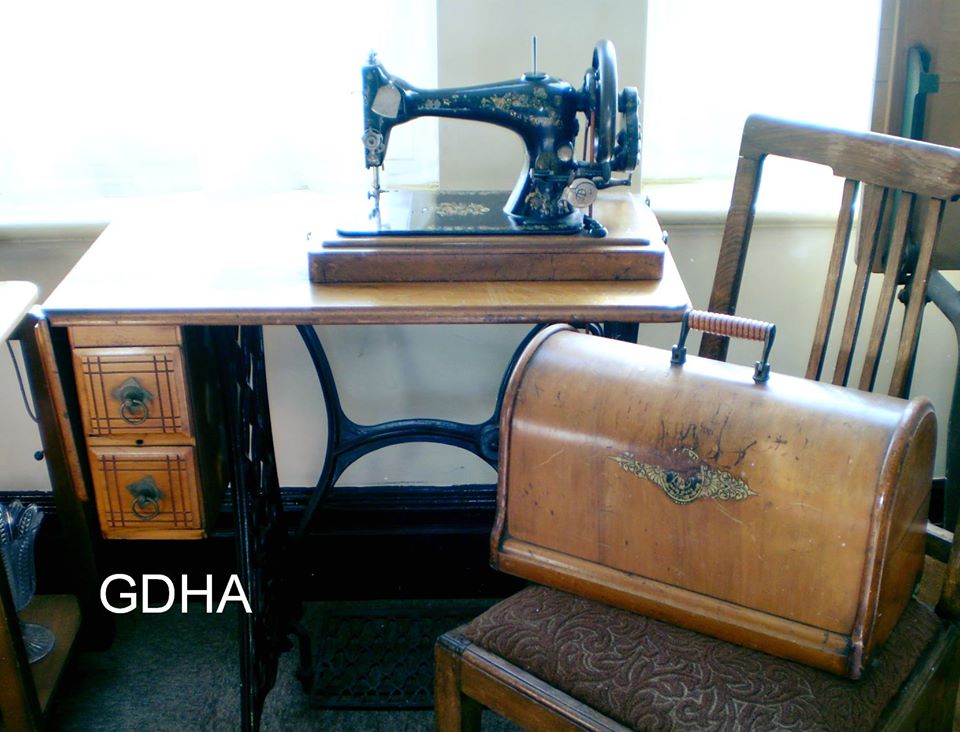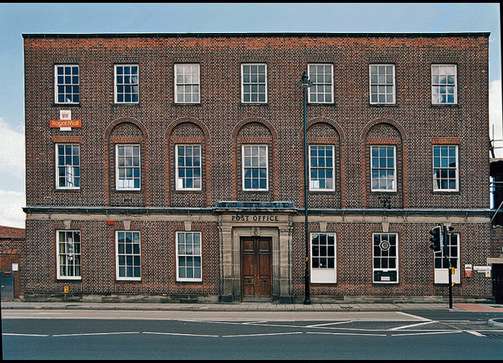The Gainsborough Heritage Centre situated on the corner of Spital Terrace and North Street houses the Telephone Exchange Tea Room, archive/research library, shop, and three floors of fantastic exhibits featuring industrial and social objects relating to the town of Gainsborough.
However, the building itself was originally built back in 1904 to be used as a General Post Office for the people of Gainsborough. In fact, one could say we have somewhat come full circle in the use of this building. The purpose of the building was for public use as the Post Office and this is still the case in the form of the Heritage Centre helping visitors and local people to learn and engage with the history of our town.
Below is a Gainsborough News article dated 3 March 1905 that shares more details behind the creation of Gainsborough’s New Post Office building at that time.
‘The public use of the new Post Office at Gainsborough commenced on Wednesday morning. Situated on the corner of Spital Terrace and North Street, the handsome building erected by Messrs Elmes (Builder), Pumfrey (Joiner), and Brown (Mason) for Mr Councillor Lobley – from whom the authorities have leased it for a period of 21 years – is a distinct credit to all concerned.
It improves vastly the appearance of an important thoroughfare and the up-to-date internal arrangements, particularly the well-equipped and commodious sorting room, allows of greater supervision and facilitates the work of the staff to an extent which was not possible in the cramped quarters just vacated in Silver Street, admirable though that site has been to a good proportion of the public. The rapid increase of postal business in Gainsborough rendered a removal, however, inevitable, but though the distance from Silver Street to Spital Terrace is comparatively very short, the Postmaster, (Mr Carter), has given earnest consideration as to the convenience of those trades’ people and others to whom the old premises were particularly ‘Handy’. Already a pillar box has been fixed in the Market Place and other arrangements are contemplated.
In regard to the new post office, it is plainly evident that no half measures have been pursued and it is only fair to say that it is due to the untiring efforts of the surveyor of the General Post Office (Mr F Pullen) that so handsome and commodious a head office has been provided. He arranged the various rooms and found in the architect (Mr W Eyre) an able exponent of his wishes. Mr Pullen had, during the many months kept in close touch with the building operations and by his instructions, a member of his staff (Mr F W LeFevre) has personally arranged the fittings so as to secure the most ample accommodation for the public and the various branches of the work. In fact, both Mr Carter and Mr LeFevre, since the idea of the new office was fixed upon, have spared no personal trouble to secure a suit of premised and equipment which not only ensures the greatest comfort and efficiency of the staff but which provides for the requirements and convenience of the public generally for many years to come. Mr Copestake, of Mansfield, has carried out the fitting up part of the business.’
However, before this time Gainsborough’s Post Office was originally located in a small shop opposite the White Hart Pub. Later it became part of Adam Stark’s shop, and he as well as being a stationer and printer, newsagent, reading-room proprietor, and patent-medicine seller, was also the Gainsborough Postmaster and a stocks and shares broker. You can find out more about Adam Stark in an article here. The Post Office moved and was located in the Market Place, but on the retirement of Adam Stark in 1855, it was moved again, to the front of the new Postmaster’s House, FW Flack, in Silver Street.
Letterboxes were introduced in 1855. With the growth of the town, more adequate premises were found in CW Hind’s shop in Silver Street in 1876. Over the next 14 years’ the sale of stamps doubled and again new premises were required; stamps were even sold on Sunday mornings. There were two deliveries, at 2.30am and 1.45pm, by three town and six country postmen. In 1890 the Silver Street premises were taken over and completely fitted out as a Post Office before moving on to the more grand premises near North Street.
The Post Office building that was built in 1904 and now houses the Gainsborough Heritage Centre also contained a Telephone Exchange on the top floor of the building. The top floor consisted of the Exchange and a flat where the Night Supervisor and his family lived. The Overnight Telephone Supervisor’s role was to put through any calls that came through to the Exchange during night time.
The idea of a telephone exchange was to interconnect telephone circuits for the purpose of establishing telephone calls. Each exchange provided an important service as a telephone system responsible for a small geographic area. Mr Pearson lived in Gainsborough’s telephone exchange with his wife Florence. Their son, Sidney (shown below in 2015) was born in his parent’s room in the top floor flat on 6 January 1925.
Mr Pearson as the Overnight Telephone Supervisor and Caretaker of the Post Office and Telephone Exchange building was on duty between the hours of 6pm and 8am. The flat that overlooked Spital Terrace had a bell to alert Mr Pearson of an incoming call. Luckily, there were not many calls during night time hours, as it would have meant Mr Pearson getting out of bed to answer them! However, a frequent night-time caller was Mr William Rose who ran the local manufacturing company Roses famous for producing sweet packaging machinery. Mr William Rose would always be thinking of brilliant ideas and would always request to be put through to Mr Durdey when he had an idea for a new design and he couldn’t wait until morning to inform his staff.
Click on the clip below and listen to Mr Pearson’s son, Sidney who in an interview for the Oral History Project in 2015 recalls his memories of his father working at night-time:
Sidney Pearson Oral History recording, 2015
According to Sidney’s memories, the Post Office itself was situated on the ground floor and this was the main customer service area. It is now where the Heritage Centre’s industrial exhibit space is located. There was also a postman’s restroom and a room where the postman’s cycles were kept on the ground floor possibly in the area where the tearoom is now.
On the first floor, now you will find a twentieth-century themed street with a Post Office scene as part of the Centre’s social exhibits however originally the large room was used for space where the clerks and admin staff worked and also housed the Postmasters office. There was a small stationery room and a room where the telegram messenger boys would wait for jobs to come in, before rushing downstairs to collect and dispatch.
Sidney Pearson Oral History recording, 2015
Recalling his father’s role at the Exchange, Sidney talks about his father’s work during the expansion of the Exchange:
Sidney Pearson Oral History recording, 2015
The flat on the top floor comprised of three rooms overlooking Spital Terrace, with a bathroom and toilet located on the main stairs of the building. The flat had its own ‘front door’ at the top of the stairs and was out-of-bounds to post office staff. All of the rooms in the flat were accessed from one long corridor where part-way down, stood a treadle Singer sewing machine now on display at the Heritage Centre.
Gainsborough Heritage Centre collection, Singer sewing machine
The main room of the flat was the living room and kitchen as this room was the hub of the house and was lit in the evening by gaslighting and had, in the fireplace an oven range. The Heritage Centre has preserved this original fireplace and it sits in the research library. However, the oven range was not used much for cooking in as the flat was also furnished with a gas cooker that sat next to the sink next to the window.
Gainsborough Heritage Centre, fireplace in Research Library
There was a pantry in the corner of the room where the lift is now and two large cupboards next to the fireplace once kept all of Sidney’s toys and clothes safe. Sidney’s mother Florence also had a piano that sat near to the fireplace.
Click below to listen to more of Sidney’s memories of his time living at the Post Office and Telephone Exchange and his view of Spital Terrace:
Sidney Pearson Oral History recording, 2015
On 7 October 1935, a story was written in the Gainsborough News titled ‘His Busiest Night on the ‘Phone’ referring to night supervisor Mr. S. Pearson. During his 33 years’ service as a supervisor of Gainsborough’s telephone exchange, the day that Socialist leader the late George Lansbury broke his leg in Gainsborough Town Hall was his busiest night ever.
‘Mr. Lansbury was taken to the John Coupland Hospital, where he told a reporter: “It is just an incident.” It put him in hospital for six months, during which time he wrote his memoirs.
Mr. Lansbury was to have delivered an important speech in the evening, but he failed to make it. Mr. Pearson is retiring on health grounds and going to live at Malvern, Worcestershire.
Mr. Pearson was first associated with Gainsborough telephone exchange as caretaker – operator when there was one board, serving about 100 subscribers, in the old premises in Spital Terrace. Now there are over 4,000 on the boards in the new post office. Mr. Pearson remembers the day when the Gainsborough exchange then in private hands was at the rear of a grocer’s shop in Market Street.
Many Interests
Mr. Pearson has been associated with several organisations. He has been a member of the Executive Committee for Yorkshire W.E.A.; committee member of the North Midland Civil Service Council for Further Education; District Organiser Post Office Workers; member of Gainsborough Employment Committee; member of Lincoln Appeals Tribunal; member of the Military Services Hardships Committee; was a Lieutenant and Platoon Committee commander of Gainsborough Post Office Home Guard; and is the holder of the Queen’s Coronation Medal.’
As the Post Office and Exchange developed there was a need for more space and so the building of the new Post Office next to the 1905 building on North Street commenced.
Photograph courtesy of British Post Office Buildings and Their Architects.
An article in the Gainsborough News on 14 April 1939 records the opening ceremony by the Assistant Postmaster General.
‘Gainsborough’s new head post office, erected in North Street adjoining the building which has served Gainsborough’s postal needs since 1905, was opened yesterday by Sir Walter Womersley, M.P. for Grimsby and Assistant Postmaster-General.
The gathering which assembled at the opening ceremony held in the large room which is to accommodate the new automatic telephone exchange was of a most representative character, representative of the business life of the town and district and also of the great Post Office department itself.
The new office has been built to serve the growing needs of the Post Office services in town and district and includes provision for an automatic telephone exchange, which, however, will not be completed until the summer of 1941, and a commodious garage for the growing fleet of Post Office vehicles. The building, which is Georgian in character and includes a very fine counter and entrance vestibules which the public will admire, contains the very latest improvements in Post Office construction. The present telephone exchange will remain in the old Post Office building until the automatic exchange is ready.
The present Postmaster, Mr. T. W. Taylor, is surrounded by a staff of competent, cheerful and enthusiastic young workers and the moving-in process has been accomplished with their hearty co-operation and support.
The advantage of the new building will be that, not only will the public have better facilities but that the staff will have improved amenities and all the Post Office services will be accommodated together. When the new office is in thorough working order Gainsborough will have a Post Office service second to none.
Yesterday’s Opening Ceremony
The opening ceremony was extremely well organised. Mr. Taylor presided, and was supported by Coun. A. Theaker, J.P., Chairman of Gains-Urban District Council, and Mrs. Theaker; Capt. H. F.C. Crookshank, M.P. for Gainsborough, and Minister for Mines; Sir Walter Womersley, M.P. for Grimsby for Assistant Post-master General, and Lady Womersley; Mr. J. Scholes, North Eastern Regional Director and Mrs Scholes; Mr. J. W. Atkinson, I.S.O., M.I.E.E., Deputy Regional Director and Mrs Atkinson; Capt. H. Hill, M.I.E.E., Staff Controller; Mr. W. R. Tyson, Telephone Manager (Lincoln Area); Mr. J. F. Murray, Tele Communications; Mrs. Taylor (wife of the Head Postmaster); Mr. A. Jackson, Postal Controller; Sir Hickman Bacon, Bt. (Thonock Hall); Mr and Mrs. J. W. E. Sandars (Gate Burton Hall). In the audience was Mr. J. Blagg, an old Gainsborough postman, who joined the service at Retford in 1882 and retired in 1929, at Gainsborough.
Before the proceedings commenced, Miss Joan Golland, one of Mr. Taylor’s young counter girls, presented Lady Womersley, Mrs. Theaker and Mrs. Scholes with bouquets.
In opening the proceedings, Mr. Taylor said the public of Gainsborough had waited patiently for their new head Post Office and he wished gratefully to acknowledge their patience, tolerance and forbearance during the last few years. They were honoured to have with them Sir Walter and Lady Womersley, Councillor A. Theaker, J.P., Chairman of the Urban Council, as the chief citizen, Capt. The Right Hon. H. F. C. C. Crookshank, and Mr. and Mrs. J. W. E. Sandars, who were always interested in the Gainsborough Post Office and its staff. He thought they would all agree that no function of that nature, with its local historical significance, would be complete without the presence of Gainsborough’s grand old man, Sir Hickman Bacon, Bt., who by the way would attain his 84th birthday on the following day. (Applause.)
New Director Welcomed
Mr. Taylor also expressed pleasure in being able to introduce the new Regional Director of the North Eastern Region, Mr. J. Scholes, O.B.E.
In a brief address, Mr. Scholes said there had been a great deal of hard work involved before the new office came to complete fruition. However, that hard work had been rewarded, and the pleasure they got out of it was the pleasure which always accompanied achievement.
At the same time, the opening of a new Post Office meant another step in the direction of progress; it was an earnest of their endeavour to give the public better facilities and to give the staff better working conditions.
Capt. Crookshank gave a hearty welcome to Sir Walter and Lady Womersley, and said the new Post Office was an achievement upon which they and the town might well be proud. They in Gainsborough were also proud of the workmanship, and it was a credit to their own work people.
Sir Walter Womersley, who was given an enthusiastic welcome, said the Postmaster-General, Major Tryon, had asked him to convey his greetings and hopes for a successful ceremony.
The reason a new Post Office had been provided at Gainsborough, said Sir Walter, was that there had been a remarkable growth in the business in the town. The office they were now vacating, provided in 1905, had become much too small for the increased volume of business, for which they had to cater. For instance, the number of letters posted in Gainsborough had increased from 1 ¾ million in 1921 to nearly 3 ½ million in 1938, so that it would be seen how the traffic through the Gainsborough office had increased. During the same period, the number of letters delivered annually from the office had gone up from 2 million to nearly 4 ½ millions. Therefore they in Gainsborough received more letters than they posted.’
The Royal Mail Delivery Office continues to use some aspects of the Post Office building built in 1939 as well as the space created for Post Office vehicles.
If you would like to read more about the history of the Gainsborough Heritage Association then here is an article titled, Gainsborough Heritage Association’s Twenty-Fifth Anniversary. Learn how the team have developed and preserved the Heritage Centre in the Old Post Office building.
Please note the Centre and Telephone Exchange Tearoom is currently closed until further notice due to the current outbreak of COVID 19/Coronavirus.
You can continue to support the Heritage Centre at this time by becoming a member. The money raised through membership will help the team to continue running the Heritage Centre after this current crisis is over.
Membership starts at £15 and when we re-open with the Association’s membership you will gain free access to the Centre and its vast archives to explore more about the history of the town and the building that was once the Post Office and Telephone Exchange. As a member, you will also receive a newsletter and other discounts so please check out the membership page and consider supporting us today!
Thank you for reading.






Comments(2)
David Redhead says
1st May 2020 at 2:23 pmMy paternal grandfather, Joseph Farrow Redhead (1884-1961) joined the Gainsborough and District Post Office in 1901 as a “Learner”. In 1902 he became a “Telegraphist & Sorting Clerk” the following year. He worked for the Post Office until he retired but in 1920 he was promoted to Lincoln. So presumably he worked in the building shown for about a dozen years as his service was interrupted by the Great War from June 1915 to April 1919. He served in the Royal Engineers as a Signaller in France. He married a local girl, Blanche Harrison, in 1908 and my father was their eldest child born in 1909. When Joseph went to war Blanche was expecting their fourth child who turned out to be yet another boy, my Uncle Bernard. They had 3 daughters after the Great War, all born in Lincoln. My cousin told me our Grandmother told her that if any of them had been a boy they would have been drowned. We think/hope she was joking!
Martin Christopher says
5th September 2020 at 3:31 pmThis is so interesting regarding the post office and telephone exchange. There was a covered bridge on the top floor from the old exchange old building through to the new post office and exchange. Before the original post office building the telephone exchange was above liptons shop on market street. Mr Cruikshank was the dep. post master general and helped to push for the new post office and telephone exchange. The switchboards were not the usual brown colour but lime green with light oak surrounds and the room was large and airy painted with a cream colour. This was a new trial to improve workers surroundings and working conditions by the post office. In 1949 Gainsborough got its dial tone instead of pick up and wait manual exchange. Local calls 20 miles radius could be dialled but longer distance had to go through the operators on the new switchboards. Long distance wanting Gainsborough area had to go through their operators. There were direct lines to Sheffield and Grimsby from the operators switchboard also Doncaster, Lincoln, Retford.
Recent posts
Events